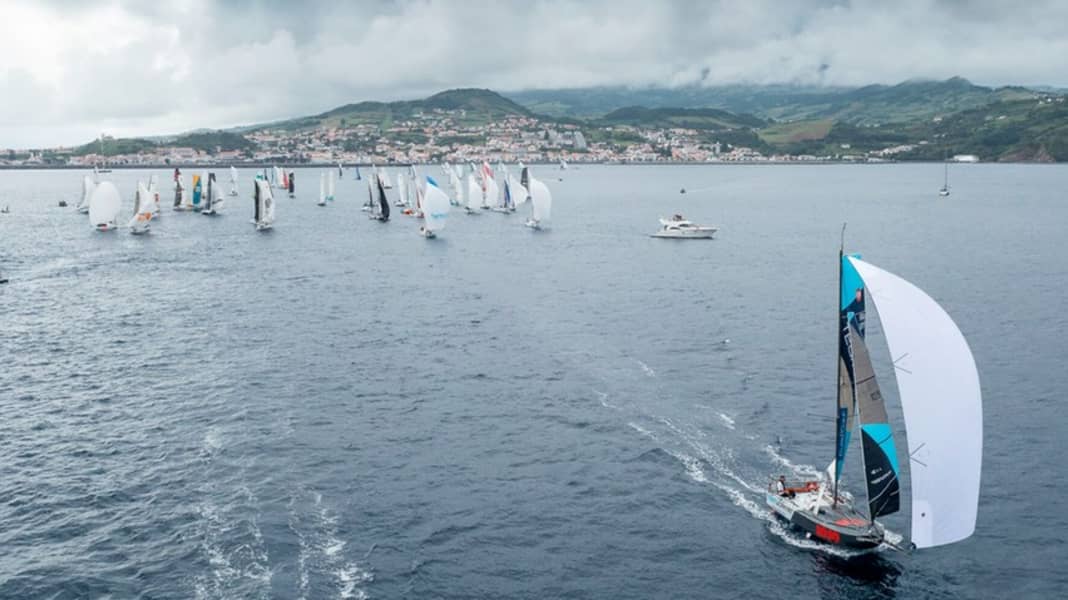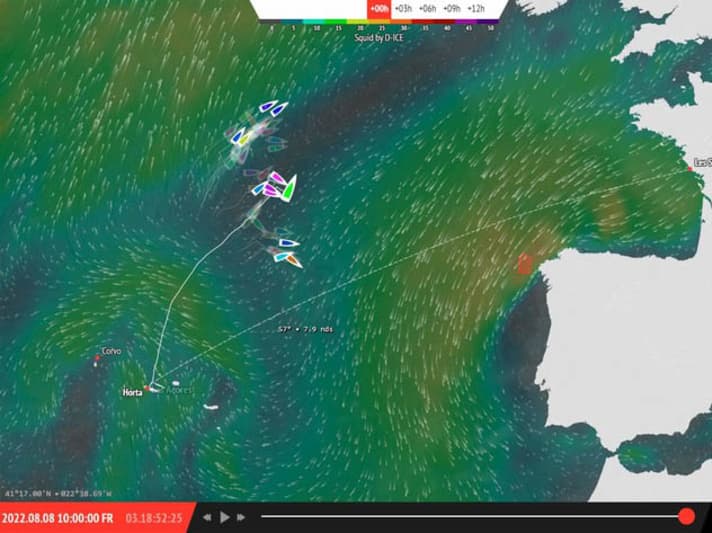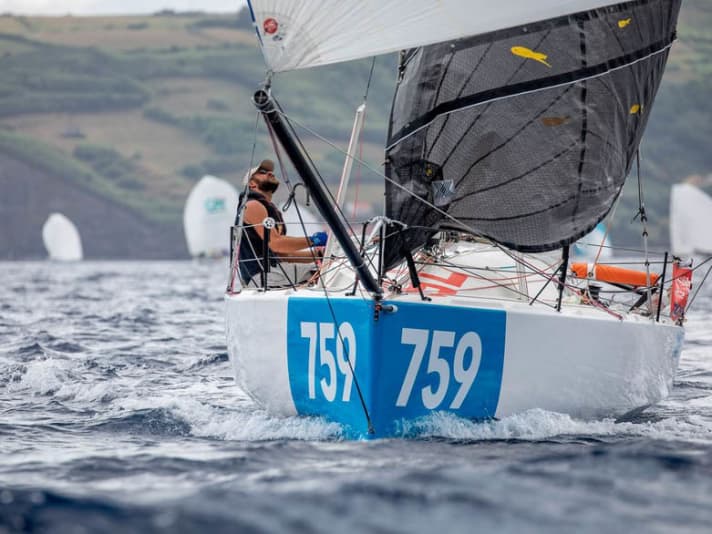Les Sables-Les Açores-Les Sables 2022: The return leg of the Minis turns into a strategic thriller
Jochen Rieker
· 08.08.2022

Long-distance regattas exert a special fascination. And nowhere is this more evident than in the mini 6.50 race from the Azores to Les Sables-d'Olonne. If you want to follow how strategy works, you should watch the Save SAS Tracker as a favourite in your browser (click here!).
Even before the start of the return leg last Thursday, it was clear that there would be two options for the approximately 1,300 miles. The reason for this was a wedge of high pressure running from south-west to north-east. It forced the mini-skippers to make an early decision:
Should they sail northwards and take an arc far away from the shortest course line in order to benefit from aft winds? Or would the more direct route, which means hundreds of miles of hard upwind sailing, perhaps be the faster route after all?
As the area of high pressure is quite stationary and promises very little wind, it was an either-or decision. Pierre Le Roy, however, who had a large time cushion on the first stage due to his superior victory in the proto classification, did not want to commit himself until the latest possible moment.

In the lead, he stayed in the centre of the pack for a long time in order to keep both options open. Since this morning at the latest, however, it has become clear: He hesitated too long and played it too safe. He has already lost a large part of his lead over the boats sailing furthest north.
Two soloists on much older boats, Jacques Delcroix and Uros Krasevac, who are currently sailing on average around three knots faster than the current leader, were able to benefit the most.
At the weekend, both of them were far behind in last place in the Proto class. They invested in their strategy and did not allow themselves to be distracted by the positions announced by radio - an achievement in itself, as the sailors have no other means of communication on board apart from a world receiver and VHF marine radio. The weather information they receive is also relatively rudimentary.
Unlike the fans, who can follow the race to Les Sables and the pressure conditions on their mobile phones or PCs, the skippers are strategically half-blind, so to speak. It will therefore be all the more exciting to observe their positioning relative to the course and wind fields - and how they deal with changes to the weather briefing they received before the start.
Mini newcomer in second place thanks to clever tactics
The Slovenian Uros Krasevac, who is sailing his first season in the Mini and has already shown his potential with very strong performances, has one of the most experienced offshore routers at his side. He will be advised by Jure Jerman, a leading meteorologist from the Slovenian weather service, who has charted the weather for numerous offshore professionals, including Phil Sharp, former Class 40 champion, and Charlie Dalin, currently the best Imoca skipper.

Before the start, Jerman recommended that his protégé choose the northern option because he considered the cross along the Rhumbline to be slower and much tougher in his forecast models. However, the position of the low to the north-west of the narrow band of high pressure has changed in the forecasts since then. By midday on Sunday, the routings for both options looked more or less the same.
"There is still an advantage in the north," Jerman told YACHT online. "However, Uros would now have to stay further north to fully benefit from it. And I don't know if he's even receiving this information and whether he's drawing the necessary conclusions from it."
It is foreseeable that the boats positioned to the north will continue to gain over the next two days, but will then also have to sail high upwind in the Irish Sea and out of the English Channel when they turn south-east towards Les Sables. Not even Jerman dares to say how it might turn out in the end. Just this much: "In any case, it will be very exciting!"
In the series mini classification, the strong sailing Swiss Felix Oberle has so far sought to stay close to Pierre Le Roy - and remained in the centre of the fleet with him for a long time. Unlike the proto leader, however, who is apparently still trying to make his way north, Oberle has been taking the more southerly route for a few hours now.
Lisa Berger, on the other hand, stayed north and is currently benefiting greatly from her choice of course. The leading positions, already quite volatile, will soon be swapped again. The distances between the north and south groups are already far apart: Lisa Berger (currently 38th) has logged 171 nautical miles in the last 24 hours, while Julie Simon (36th) has travelled just 78 miles in the south.
What is surprising is how many rather inexperienced skippers have switched to the shorter but tougher upwind course. They are facing a cross of at least 600 to 700 nautical miles, with wind forces of four to six. This is no fun in the light, short minis. On the contrary: man and material are severely challenged.

